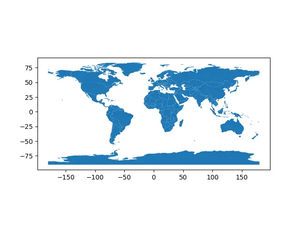Introduction
Autocorrelation is a vital statistical tool that measures the similarity between a series and a lagged version of itself over successive time intervals. It’s particularly useful in time series analysis to identify patterns and the possibility of predictability. In pandas, computing the autocorrelation of a series for a specific lag, N, is straightforward, thanks to its comprehensive data manipulation capabilities. This tutorial will guide you through calculating lag-N autocorrelation using pandas, with progressive examples from basic to advanced.
Getting Started
Before diving into autocorrelation calculations, ensure you have pandas installed in your environment:
pip install pandas
For time series data, pandas offers the .autocorr() function, which we will exploit in this tutorial. Let’s get started with a simple Series.
Calculating Basic Autocorrelation
import pandas as pd
import numpy as np
# Generating a time series with random data
ts = pd.Series(np.random.randn(100))
# Calculating autocorrelation with lag 1
corr = ts.autocorr(lag=1)
print(f"Lag-1 Autocorrelation: {corr}")
This snippet generates a random time series and computes its lag-1 autocorrelation, providing a quick insight into the immediacy of its temporal dependencies. You’ll notice we used numpy for data generation, another powerhouse library that integrates seamlessly with pandas.
Exploring Further: Incrementing Lag
Now, let’s increase the lag to explore how the correlation changes over different time intervals.
lags = range(1, 11)
autocorrs = [ts.autocorr(lag=lag) for lag in lags]
for lag, corr in zip(lags, autocorrs):
print(f"Lag-{lag} Autocorrelation: {corr}")
This loop calculates and prints autocorrelation for lags ranging from 1 to 10. It showcases how autocorrelation values fluctuate as the lag increases, offering deeper insights into the time series structure.
Visual Interpretation of Autocorrelation
Understanding autocorrelation is significantly enhanced when visualized. Pandas, combined with libraries like matplotlib, enables rich visualizations of such statistical measures.
import matplotlib.pyplot as plt
# Plotting autocorrelation for different lags
plt.figure(figsize=(10, 6))
plt.stem(lags, autocorrs, use_line_collection=True)
plt.title('Autocorrelation for Different Lags')
plt.xlabel('Lag')
plt.ylabel('Autocorrelation')
plt.show()
Here, we used a stem plot to display the autocorrelation for different lags visually. This type of plot is helpful in quickly identifying patterns and potential seasonal effects in the data.
Seasonality and Autocorrelation
In some time series, autocorrelation reveals seasonal patterns by showing peaks at intervals that correspond to the season length. Detecting such patterns programmatically involves looking for systematic changes in autocorrelation values at specific lags.
Dealing with Non-Stationary Data
Time series data often exhibits trends and seasonality, making the series non-stationary. This can skew autocorrelation measurements. One common approach to mitigating this effect is differencing the series.
ts_diff = ts.diff(periods=1).dropna()
# Recalculating autocorrelation for the differenced series
corr_diff = ts_diff.autocorr(lag=1)
print(f"Lag-1 Autocorrelation of Differenced Series: {corr_diff}")
By differencing the series (subtracting the current value from the previous one), we aim to remove trend and seasonality, thus stabilizing the mean. This approach makes detecting autocorrelation due to intrinsic properties of the data more straightforward.
Advanced Techniques: Partial Autocorrelation
While this tutorial focuses on simple autocorrelation, there’s an advanced concept called partial autocorrelation that measures the correlation of a series with its own lagged version, but after eliminating the influence of intermediate lags. This is extremely useful in autoregressive model identification. Computing this requires additional libraries such as statsmodels.
from statsmodels.tsa.stattools import pacf
# Calculating partial autocorrelation
pacf_values = pacf(ts, nlags=10)
print(pacf_values)
This enhances our understanding of the series by isolating the effect of intermediate observations.
Conclusion
In this tutorial, we’ve explored how to compute lag-N autocorrelation in pandas, leveraging its built-in functionality to gain insights into time series data. By understanding both the immediate and the extended temporal dependencies, we can better model and predict time series behavior. Pandas, with its versatile toolkit, makes this process accessible and efficient.
